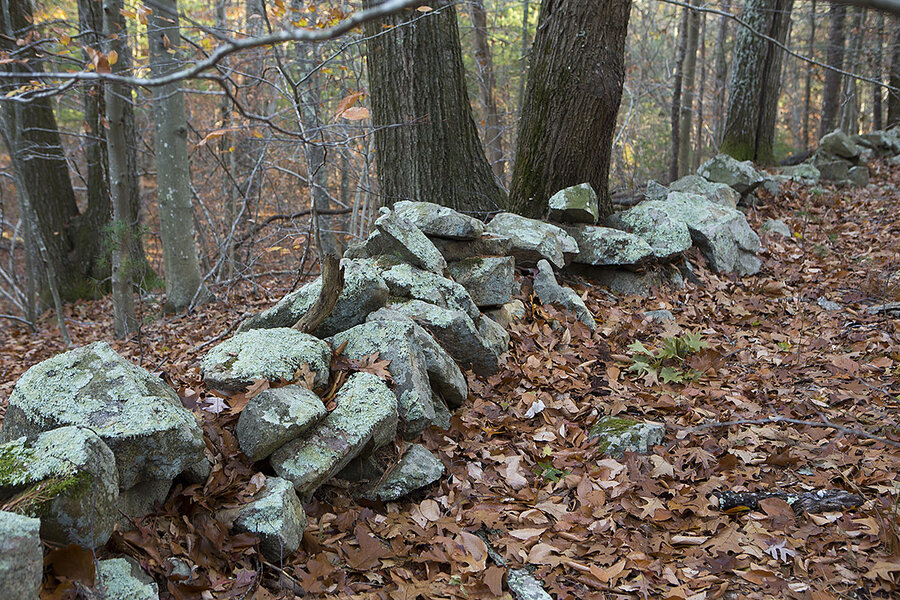Ill-defined boundaries that are set in stone
Loading...
I recently found myself walking through the woods near my house in New Hampshire, looking for a hole in a stone – in fact, for several of them. The house is close to the center of a small village, but there are woods out back, and we want to build a deck on the rear corner of the house so we can sit out and enjoy the sight and sound of the woods. The town fathers raised a question: How close to the property line would the corner of the proposed deck be? This involved a careful look at the deed for the house.
The house was built around 1929, and an aerial photograph of the town dated 1932 shows it as the only house in the neighborhood. Earlier owners of the land owned several of the surrounding pastures, most of which have since reverted to forest. Bits and pieces were sold off – a corner here, a wedge there, a couple of house lots. When my wife bought the house and land in 1952, the surviving area of about 3-1/2 acres was irregularly shaped. The corner markings had evolved over decades of surveying practice.
None of these markings were quite as archaic as those in a deed that my father claimed to have seen when he was a lawyer in a small Massachusetts town in the 1930s. That deed identified the corner of the property as being “at the place where the elm tree was cut down in 1732.”
In our case, a few of the 11 corners of the land were marked by “a stone post set” or “an iron rod set,” according to the deed. I found all but two of these: They were in a dense thicket and a swampy spot. But some of the other corners are identified in the deed and on the early surveyor’s map as marked by “a hole drilled in a stone.”
Early boundaries in New England were often marked by stone walls. There are plenty of stones with which to build them. Local people say that if you clear all the stones from a field, a new crop of stones will grow the following year. This sounds like a fairy tale, but it is true. The glaciers left stones scattered in the soil like raisins in a pudding, and the annual frost heaves – given temperatures down to 20 degrees below zero F. – stir the soil and force the stones upward a few inches every year.
Stone walls border the edges of our land, and separate old cow pastures and cow paths within it. It is no surprise, considering the history, that the border with one neighbor begins at a hole drilled in a stone, then follows the stone wall northwesterly to another hole drilled in another stone.
Early New England towns had a town officer, “the fence-watcher,” whose job was to resolve disputes about these walls, and, for example, ensure that neighbors maintained them sufficiently to keep the cattle in. A common rule required each neighbor to maintain one half of the wall – the left half, I believe, as they faced each other across the wall.
I haven’t asked if our town still has a “fence-watcher,” but the stone wall between me and my neighbor runs through a wooded area and has not been maintained for decades. Tree roots have dislodged the stones in the wall, children have played with the stones, and in some places only an irregular set of scattered stones remain.
Occasionally wire fences have been set up to control pets, with no real attention to the actual property line, and we get along well enough that it has never been a problem.
But I’m still not really sure where some of those drill holes are, and the stones have eroded enough over the years that I’m not sure the holes are identifiable.
The neighbor is perfectly willing to let me have the deck where I want it. The town is more careful – they prize open space and don’t want a structure too close to a property line. The town’s proposed solution is modern: They suggest having a careful survey, which would have the property line running at 42.83 degrees west of due north for 207.6 feet, or something like that. They could then determine the exact distance from the corner of the proposed deck to that line, much more precisely than the distance to the remains of the old stone wall.
That sounds expensive, and somehow not in keeping with the history of the land. I’ll go look one more time for those holes in the stones.







